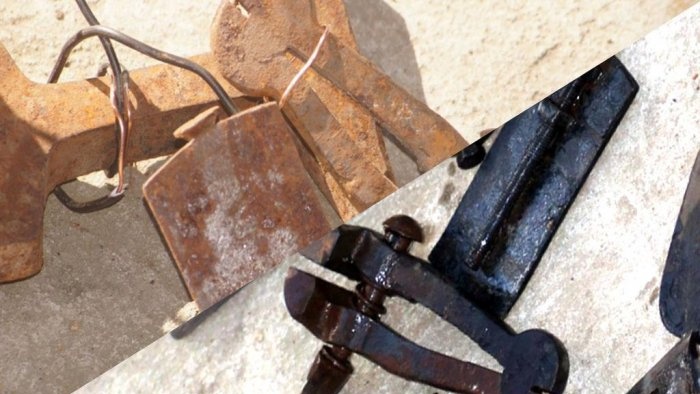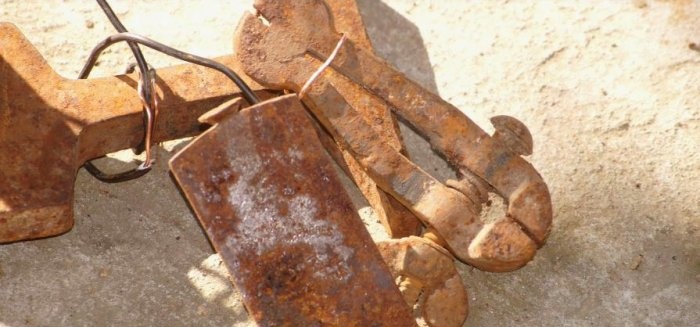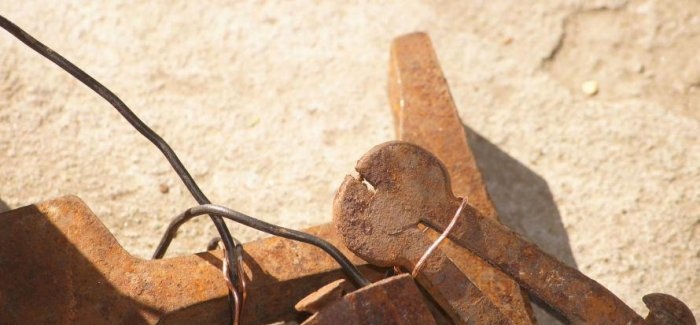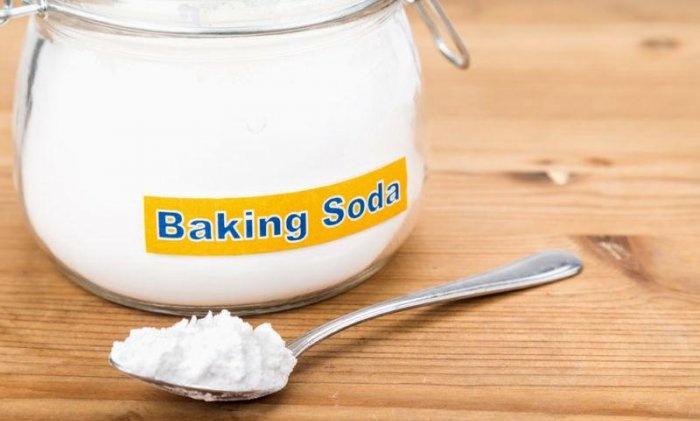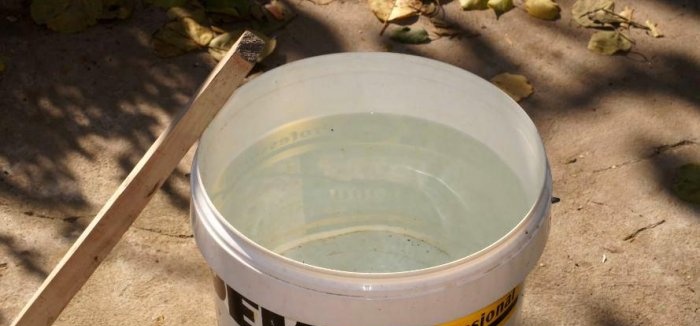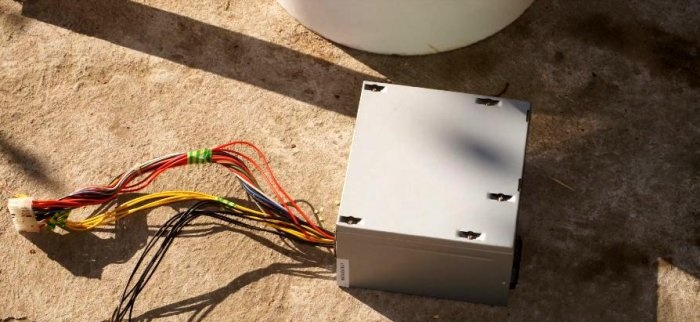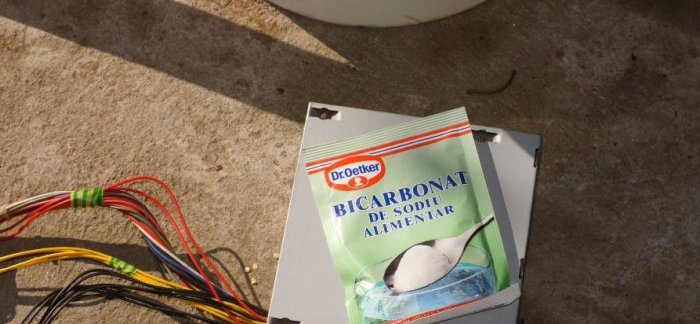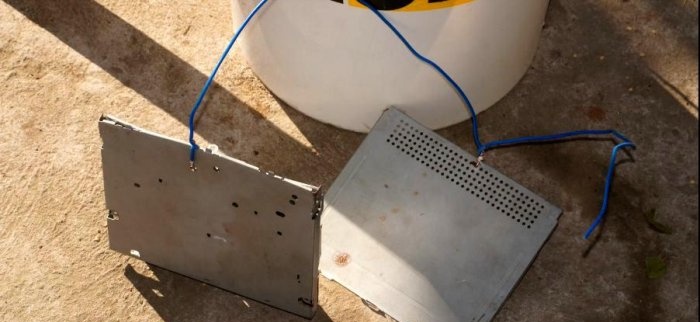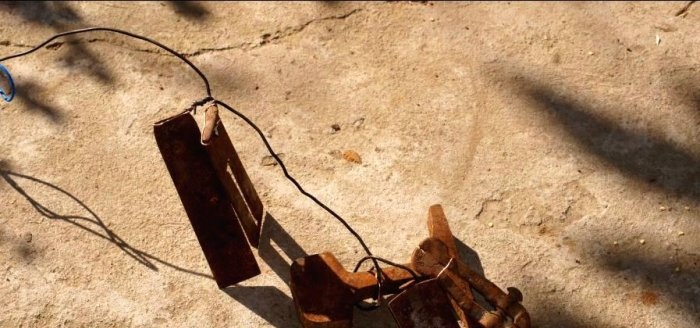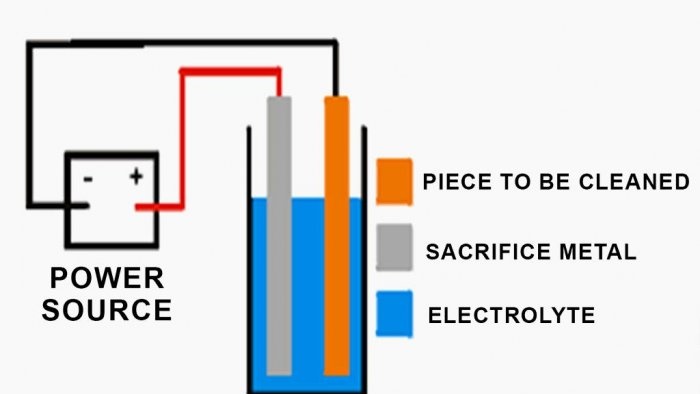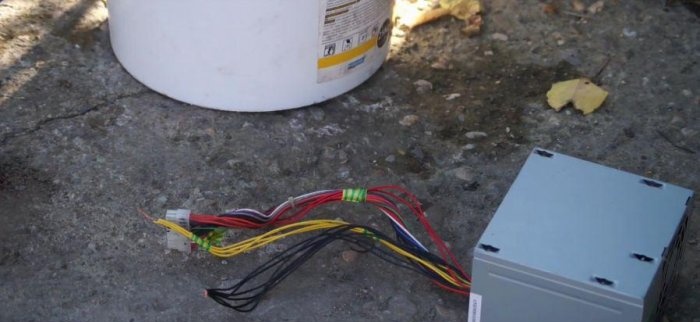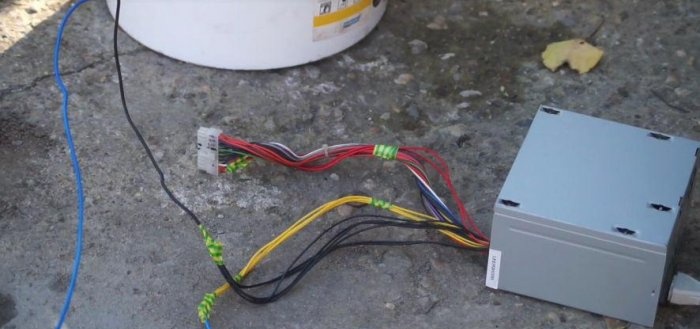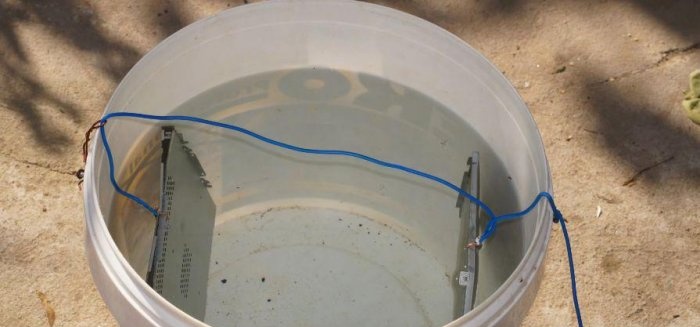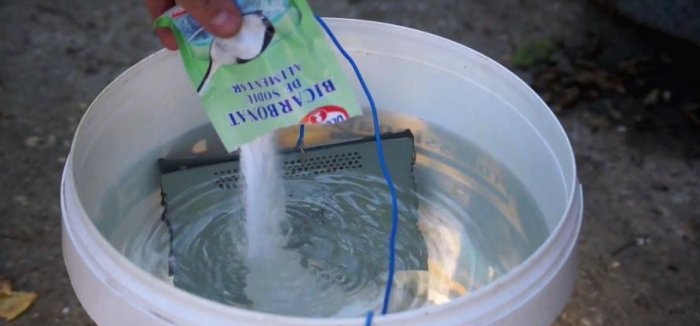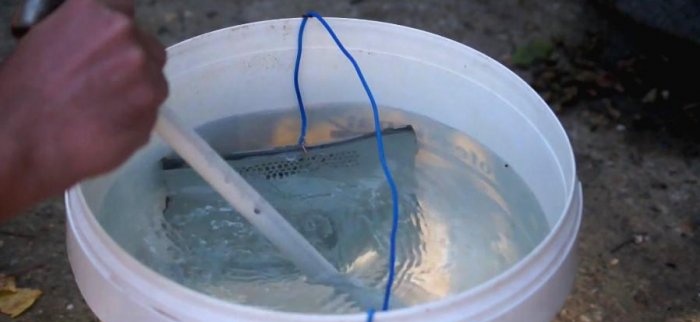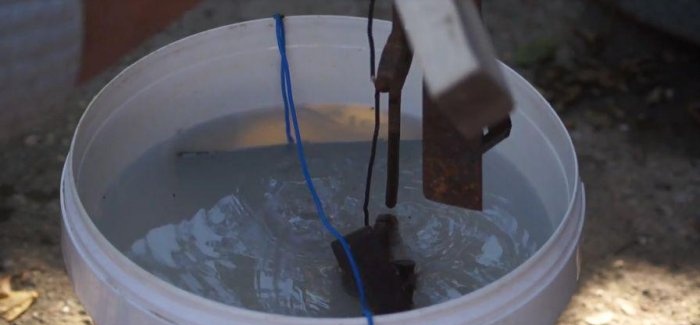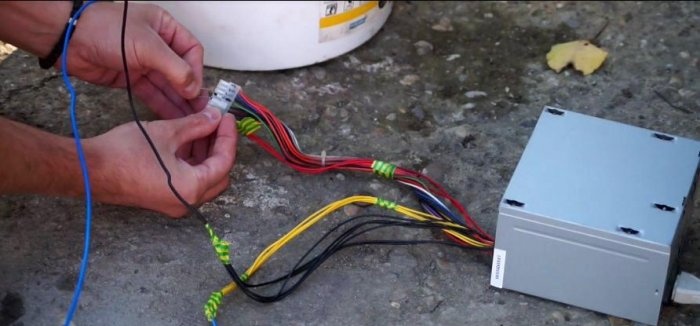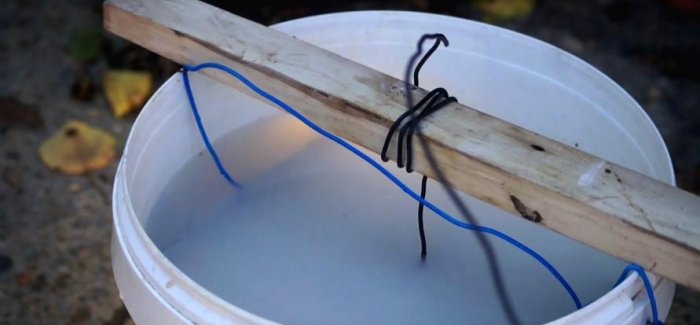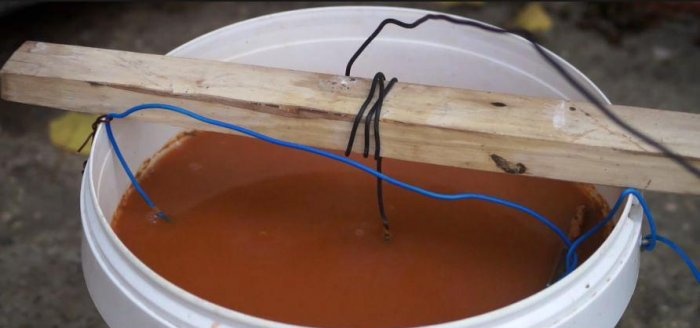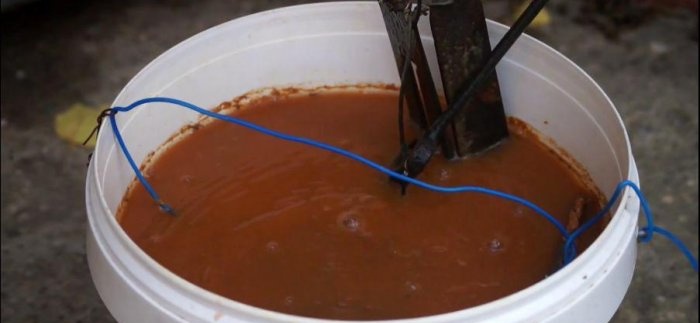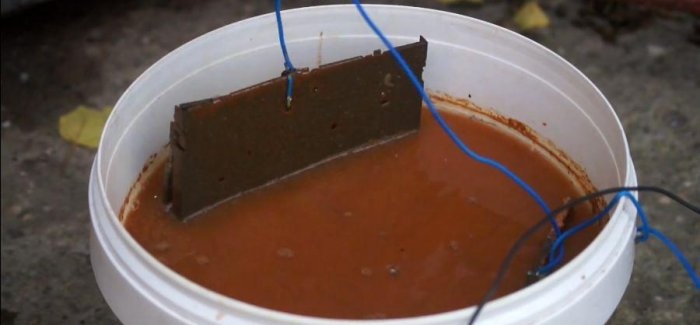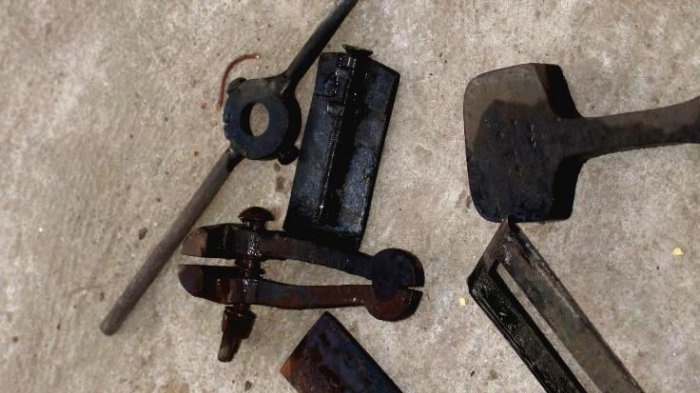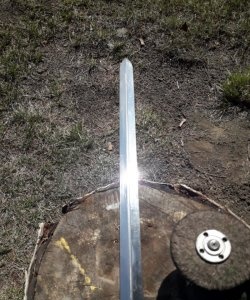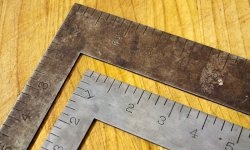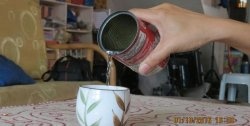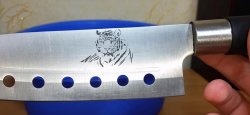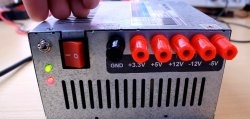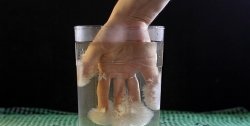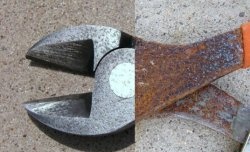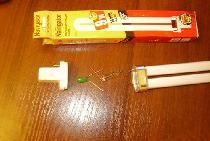This is my favorite method of removing rust from heavily corroded metal products. The method is very simple and highly effective. With a little patience, you get impressive results.
Use this method only in the open air, as highly toxic gases are released during the process.
What do we need
- 1. Baking soda (I used 400 g per 10 liters of water, but you can try experimenting with concentration).
- 2. Plastic bucket (necessarily plastic as a non-conductive material).
- 3. Power supply 12 V DC.
- 4. Sacrificial metal to which rust will be transferred.
- 5. Copper wires.
- 6. Water.
Training
Connect the negative wires from the power source to the parts to be restored.
Using copper wires, attach the parts to be cleaned to the black contacts of the power source, and the sacrificial metal to which rust is transferred to the yellow contacts (+12 V).
Fill the bucket with water and place the metal there to transfer rust. Ensure that the fasteners are secure to prevent short circuits. Add baking soda and mix well.
Then lower the parts to be cleaned and avoid contact with metal to prevent short circuits. Check again if you did everything correctly and start the power supply (see the last image). If all actions are performed correctly, after some time, bubbles will appear on the surface.
Electrolysis with Soda
Purification occurs by electrolysis. A mixture of baking soda with water is an electrolyte, which with the help of an electric current produces a chemical reaction of separation of materials on electrodes.
The main components of the electrolysis process are:
An electrolyte is a substance that conducts electric current using ions.
DC power supply - provides the energy necessary to create or discharge ions in the electrolyte. Electric current is carried by electrons in an external circuit.
Two electrodes are conductors that provide a physical connection between the power source and the electrolyte.
Rust removal result
I started the process for two hours, but it would take about six hours to get a good result.
The result depends on the duration of the process. If the result does not suit you, you can repeat the process several times. You can also experiment with the concentration of soda and the current strength in the region of 10 amperes (the process will not start with a current strength of 5 amperes, and if the value is more than 15 amperes, the electrolyte will begin to boil).
After the end of the process, you can clean your products with water and a brush.
